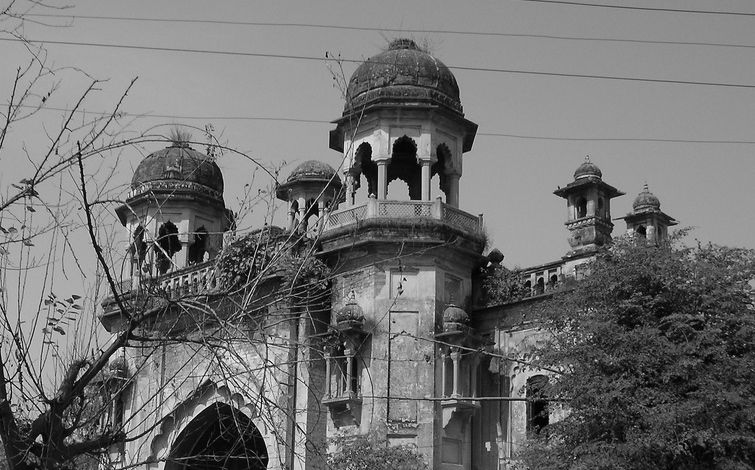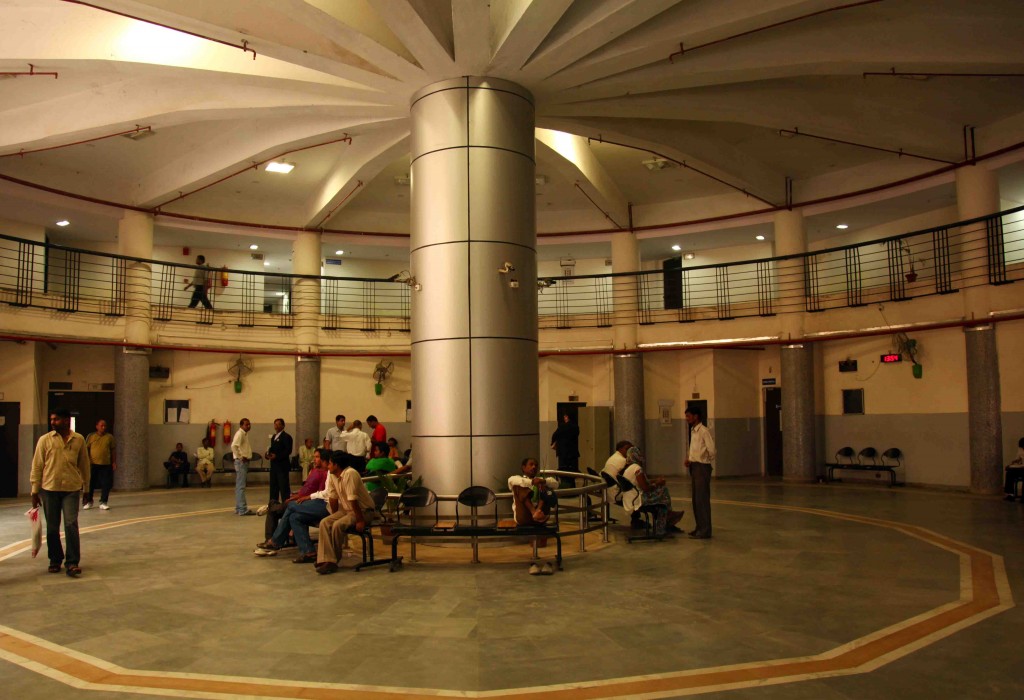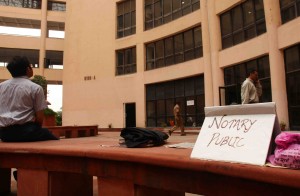The High Courts of Kerala and of Punjab and Haryana have considered whether a meeting of one member alone is permissible, but have not satisfactorily laid out the law on one-member meetings. Though neither court was faced with facts specifically requiring resolution of the entire issue, both judgments leave certain critical issues unexamined while one has, in apparent error, missed the point that the statutory language itself permits one-person meetings in certain circumstances.
Quorum for meetings
Section 174 of the Companies Act, 1956 (“the Act”) prescribes the quorum requirements for a general meeting.
Sub-section (1) prescribes that two members, in the case of a private company and five, in the case of a public company, personally present shall be the quorum for a meeting of the company, unless the Articles provide for a larger number.
Sub-sections (3) to (5) are applicable, under sub-section (2), unless the Articles provide otherwise. These subsections provide that:
Sub-section (3) provides that a meeting called by requisition of members shall, if there is no quorum, stand dissolved.
Sub-section (4) provides that meetings other than those dealt with under sub-section (3) shall, in case of lack of quorum, stand adjourned.
Sub-section (5) provides that “if at the adjourned meeting also, a quorum is not present … the members present shall be a quorum”.
‘A meeting of one person’
Sub-section (1) makes it clear that, as a general rule, a meeting of a company cannot proceed with less than two members.
The sense imported by the word ‘meeting’ itself suggests the rule is well-founded; the phrase ‘a meeting of one person’ elicits an intuitive sense of unhappiness of wording.
The position under sub-section (1) is also in accordance with common law. In Sharpe v. Dawes, [1876] 2 QBD 26 (CA) it was held that a meeting, ordinarily and by the very nature of the term, implies a coming face to face of at least two persons and there is no ‘meeting’, speaking generally, if one only attends. In Re. London Flats Ltd., 1969 (1) WLR 711, which arose from very interesting facts (unfortunately beyond the scope this post) holds to similar effect.
English law recognises, however, that the word ‘meeting’ might be used in a special sense, to mean a ‘meeting’ of only one person. East v. Bennett Bros., [1911] 1 Ch. D. 163 is an example of such use. That case involved interpretation of a provision requiring the vote of a class of members in meeting. The Court held that the word ‘meeting’ in that provision permitted a one-member meeting, since the provision was framed at a time when the class comprised of one person only.
Though it is, therefore, plain that the presence of two members is ordinarily a prerequisite for a valid meeting in India as much as in England, the circumstances when this rule may be relaxed remain unclear. The question, therefore, resolves itself into whether there are exceptional circumstances in Indian law which permit a one-person meeting.
The provisions in the Act permitting the Government and CLB to direct that a one-person meeting be convened are some obvious exceptions, but involve intervention of judicial or administrative authorities.
Less obvious, however, is the fact that Section 174 itself, properly read, provides for a single-person meeting in certain circumstances.
Deemed quorum of one member
Under sub-section (1) of Section 174, the quorum for a meeting of the members of a private company is two, except where the Articles prescribe quorum of a greater number. Sub-section (2) makes sub-sections (3) to (5) applicable, unless the Articles provide otherwise. Therefore, sub-sections (1), (3), (4) and (5) govern meetings of a private company whose Articles do not require deference to amendatory or contrary provisions (“the Default Case”).
Shorn of unnecessary detail, these provisions mandate that a meeting lacking quorum shall stand adjourned (to the same place and time, unless the Board determines otherwise) by a week. Where there is no quorum at the adjourned meeting, members present constitute quorum (a “Deemed Quorum”).
In the Default Case, sub-section (5) operates, of necessity, to constitute a Deemed Quorum of one member. This is because lack of quorum arises, in the Default Case, exclusively where one member only is present.
It is a well-established principle of statutory interpretation that a provision ought to be construed in a manner which does not render it, or any part of it, otiose. Practically, this rule would require that a provision be given effect in every situation to which it can reasonably be said to apply.
Therefore, Section 174 has to be read, in the Default Case, as permitting an adjourned meeting of one person alone. To refuse to do so would be to render Section 174(5) otiose in the Default Case (a situation to which it can reasonably be said to apply).
The judgments of the High Courts
The Punjab and Haryana High Court, in Bhankerpur Simbhaoli Beverages Pvt. Ltd. v. Sarabhjit Singh, [1996] 86 Comp. Cas. 842 (P&H), was dealing with an allegation that an extraordinary general meeting of the company was illegal since only one person was present. The Court held that “in order to give a finding as to whether the extraordinary general meeting was held, it is necessary to find out first, as to whether at least two shareholders were present in the meeting because a single person cannot constitute a meeting”.
This position, for which the Court drew reliance from, inter alia, the English cases above, went uncontested as is clear from the Court’s observation that “the proposition is not disputed by Mr. G Ramaswamy, senior advocate, and rightly so”.
Insofar as the Court proceeded on an admission, the judgment cannot provide much authority for the position in law. In any event, the Court has stated little more than what is already clear from Section 174(1), that is, as a general rule, there cannot be a meeting of one person.
In Kerala v. West Coast Planters’ Agencies Ltd., AIR 1958 Ker 41, the Kerala High Court – in appeals against Orders of acquittal in the prosecution of a company and its managing director – dealt with whether there could be a general meeting under Section 76 of the Companies Act consisting of one member (the company, at the relevant time, had only one member) and whether the managing director could be prosecuted under Section 76(2) for failure to convene such meeting of one member.
The Magistrate’s order of acquittal, the Court notes, took “the common sense view that for a meeting there must be at least two persons, that a man cannot meet himself, and that the general meeting required by Section 76(1) being an impossibility, no liability attached under Section 76(2) or Section 133(3) to either of the accused”.
The Court placed its imprimatur on the Order of acquittal and the view taken by the Magistrate. Relying, inter alia, on Sharp v. Dawes (supra) and East v. Bennett Brothers (supra), the Court said: “…[T]he common sense view taken by the Magistrate is also the true view in law”.
Excepting for one dimension discussed infra, this judgment has also not added much to the general rule that a meeting requires more than one person.
Objections to deemed quorums of one-member and the Section 13 Rule
The two objections raised against reading Section 174 as necessarily permitting an adjourned meeting of one person in the Default Case, although distinguishable, are based on a common premiss and flow into one another.
The first of the two objections is that the interpretation of Section 174(5) as permitting a one-person meeting is contrary to the literal interpretation rule, since Section 174(5) uses the word ‘members’ while mandating that those remaining at the adjourned meeting would constitute quorum. The answer to this objection is simply that it fails to account for the General Clauses Act, 1897 (“the GC Act”). Section 13 of the GC Act provides:
“13. Gender and Number – In all (Central Acts) and Regulations, unless there is anything repugnant in the subject or context – words importing the masculine gender shall be taken to include females, and words in the singular shall include the plural, and vice versa.”
(emphasis supplied)
The interpretive tool in Section 13 (“the Section 13 Rule”), as applied, requires that the word ‘members’ in sub-section (5) be read to include ‘member’. There is clearly nothing repugnant in the subject or context of Section 174 that excludes its application.
As a matter of fact, the context of Section 174(5) supports application of the Section 13 Rule since one dimension of its applicability (that cannot be excluded without violating the rule against redundancy) necessarily involves a situation where one member alone is present, that is, an adjourned meeting of a ‘Default Case company’ lacking quorum (a ‘Default Case company’ refers, obviously, to a private limited company whose quorum, under S.174(1) is two members and to whom sub-sections (3) to (5) applies).
The second objection to interpreting Section 174(5) as permitting a single-person meeting – in essence an extrapolation from the first – grounded the decision of the High Court of Kerala in the West Coast Planters’ Agency Case. The State had argued before the High Court that:
“Regulations 51 and 52 in Table A to the First Schedule to the Act (now embodied in Section 174 of the Companies Act, 1956) … read together imply that a meeting can be held with less than two members.
“… Regulation 51 lays down that two members personally present shall be a quorum in the case of a private company and Regulation 52 says that if at an adjourned meeting a quorum is not present, the members present (which covers the case of one member, the plural including the singular, and which, in the case of a private company can be only one) shall be quorum”.
(emphasis supplied)
The High Court rejected the State’s proposition on the basis of a ‘reductio ad absurdum’ argument, holding that:
“if Section 147 and 162(iv) of the Act contemplate the case of a one-man company, they contemplate also a no-man company, for the reduction of membership below two or seven as the case may be, can as well be to zero as to one (similarly in the case of the regulations, the absence of a quorum of two includes a case where none is present).”
(emphasis supplied)
There is no reference in the judgment to the General Clauses Act, 1897 and it is not known whether the State based its argument on the Section 13 or not. That provision, however, is a complete response to the Court’s objection.
The reading of ‘members’ as including ‘member’ in Section 174(5) is based on a rule of interpretation contained in Section 13 of the GC Act, which is a statutory prescription. This rule requires, context permitting, that a word in the singular shall include the plural and vice versa. Clearly, the provision does not extend to reading the singular or plural, as used, to include ‘none’.
The High Court’s view is, therefore, but a flight of fancy, unmoored from readily available interpretive tools. Apart from being mandatorily applicable to determine Parliament’s true intention, these tools, properly applied, would have left no room for such concerns as the Court raised.
Cases other than the default case
It remains to be determined whether one person can constitute a Deemed Quorum in cases other than the Default Case, viz.:
a) In cases of public limited companies where sub-section (1) applies
b) In cases of either public / private companies where a higher quorum stipulated by sub-section (1) is prescribed by Articles in exercise of power conferred by that provision
(The Default Case, together with the cases at (a) and (b), comprise the ‘universal set’ of situations conceivable under Section 174. Consequently, if a Deemed Quorum of one member is permissible in these cases also, then adjourned meetings can proceed with a Deemed Quorum of one member in all cases.)
Although absence of quorum in meetings of companies at (a) and (b) does not necessarily mean that one member alone is present (as it does in the Default Case), it must be permissible for an adjourned meeting to go on, under Section 174(5), with a Deemed Quorum of one member in these cases also.
To hold otherwise would arguably violate Article 14; such a reading implies that Parliament has chosen to treat ‘Default Case companies’ and other companies differently, although they are similarly situated (that is, faced with an adjourned meeting where one member alone is present despite lapse of stipulated time from commencement).
(Aditya Narayan is an advocate at the Karnataka High Court.)





